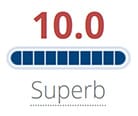Risk of fatal accidents higher at night
People who drive at night are at an increased risk of becoming involved in a traffic accident than those who drive during the day.
For some Chicago residents, the setting of the sun indicates the end of the day and people spend the evening in their homes. Other people, however, are still out traveling during nighttime hours, and are busy driving to or from work, having dinner with friends or running last minute errands. What some people do not know is that driving at night can be inherently more dangerous than navigating the roads during the daytime. In fact, the risk of getting into a deadly motor vehicle accident is significantly higher at night than it is during the day.
Facts and factors
According to the National Safety Council, people who drive at night are three times more likely to die in a traffic collision than those who drive during daylight hours. There are several factors that can lead to this increased risk of an accident. These include, but are not limited to, the following:
- Decreased ability to see in the dark, as well as inhibited depth perception and peripheral vision, especially for older and teenage drivers.
- Increased number of drugged and intoxicated drivers on the road.
- More inexperienced teen motorists on the road who are unaware of how to handle certain nighttime driving situations.
- More motorists are driving while drowsy.
- Greater amount of construction activity.
In addition to these factors, headlight glare can cause drivers to become temporarily blinded, and can inhibit drivers’ ability to respond to bad weather conditions, pedestrians, traffic signals, other vehicles and objects in the road.
Studying the facts
While a number of studies have focused on the effects of nighttime driving on motorists’ behavior, research conducted by the Texas Institute of Transportation concentrated on nighttime driving and teens. Although all drivers have an overall harder time driving in the dark, teenagers lack the experience needed to handle certain hazardous situations. For example, most people are unable to accurately judge the speed and distance of an oncoming vehicle in the dark, and should wait until there are no vehicles coming before turning out into traffic. Teenagers, on the other hand, act in a more inpatient manner, and may not wait until all of the oncoming traffic has passed.
This along with the fact that teens are more likely to engage in distracting driving behaviors, such as texting and driving, increase their risk of an accident.
Dealing with the aftermath of an accident
When people become injured in a car accident, they may be entitled to compensation. A personal injury attorney in Illinois may be able to look at the details involved in your specific case and help you explore all of your legal options.
\













